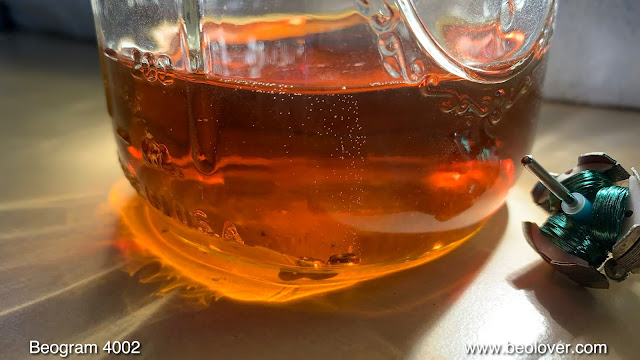I recently received two Beogram 4002 DC platter motors from Michigan for restoration. In the following I will show the process for one of them. The other received the exact same treatment. This shows motor #1 as received:
I disassembled the motor to extract the bearings for oil infusion under vacuum:
The bearings are the two small donuts up front on the black pad. I immersed them in motor oil and pulled a vacuum:
Immediately bubbling started indicating that air was drawn out from the porous bearing material to make room for oil inter diffusion. After about 72 hrs the process stopped and I removed the bearings from the oil:
Then I reassembled the motor and installed it into one of my Beogram 4002s for testing with the BeoloverRPM device:
the BeoloverRPM device allows logging the RPM over extended periods of time. Perfect for detecting elusive intermittent RPM changes. This graph shows the two curves I measured for motors #1 and #2:
These curves are as good as it gets with the Beogram 4002 DC motors. Motor #2 (blue) is slightly more 'unruly' than #1. In my experience some motors can take a while to settle after restoring them, and I think after playing a stack of records, it may well get as stable as #1. At any rate the fluctuations are well below what humans can detect, i.e. these motors are both ready again for business.






No comments:
Post a Comment
Comments and suggestions are welcome!